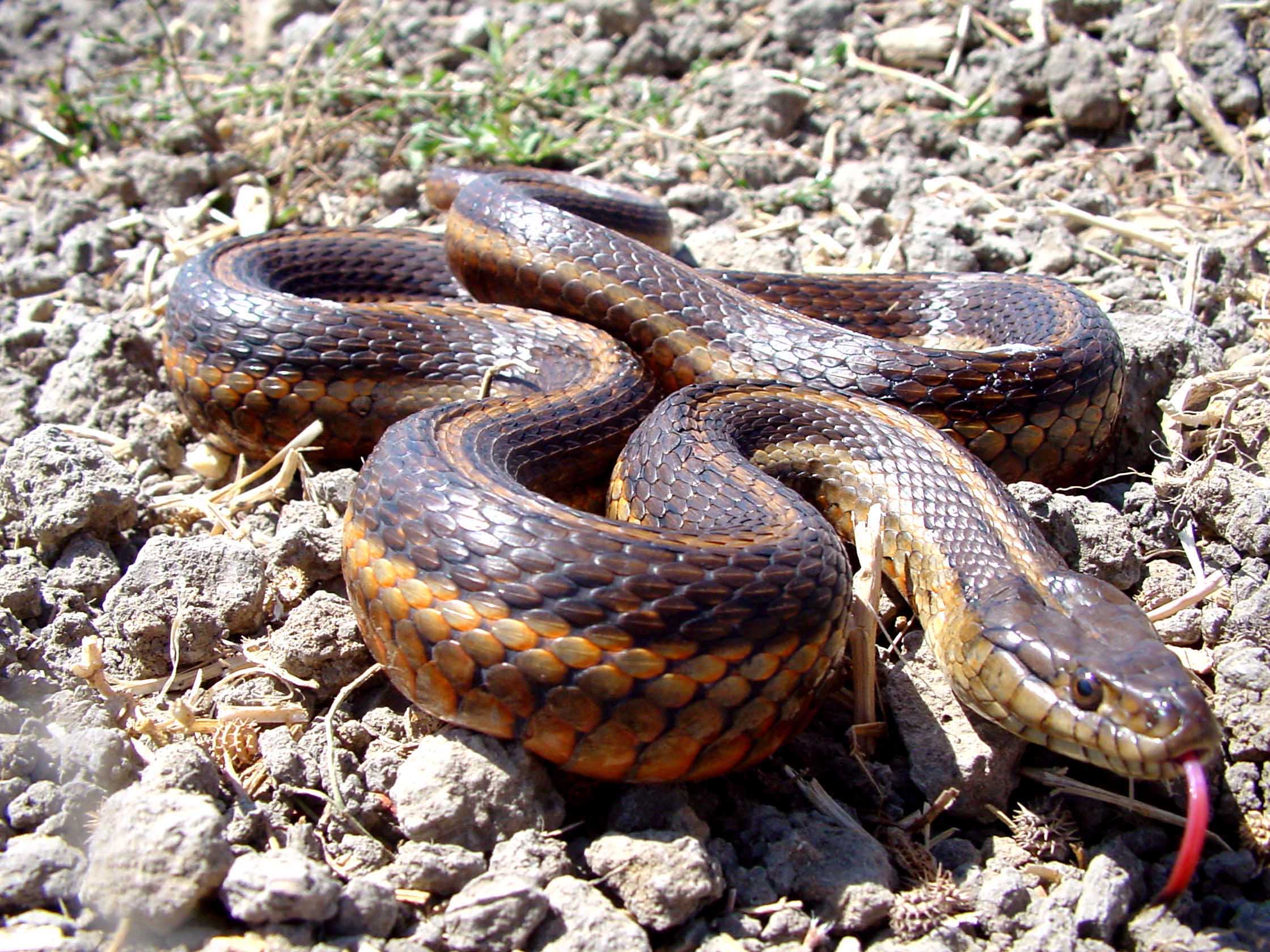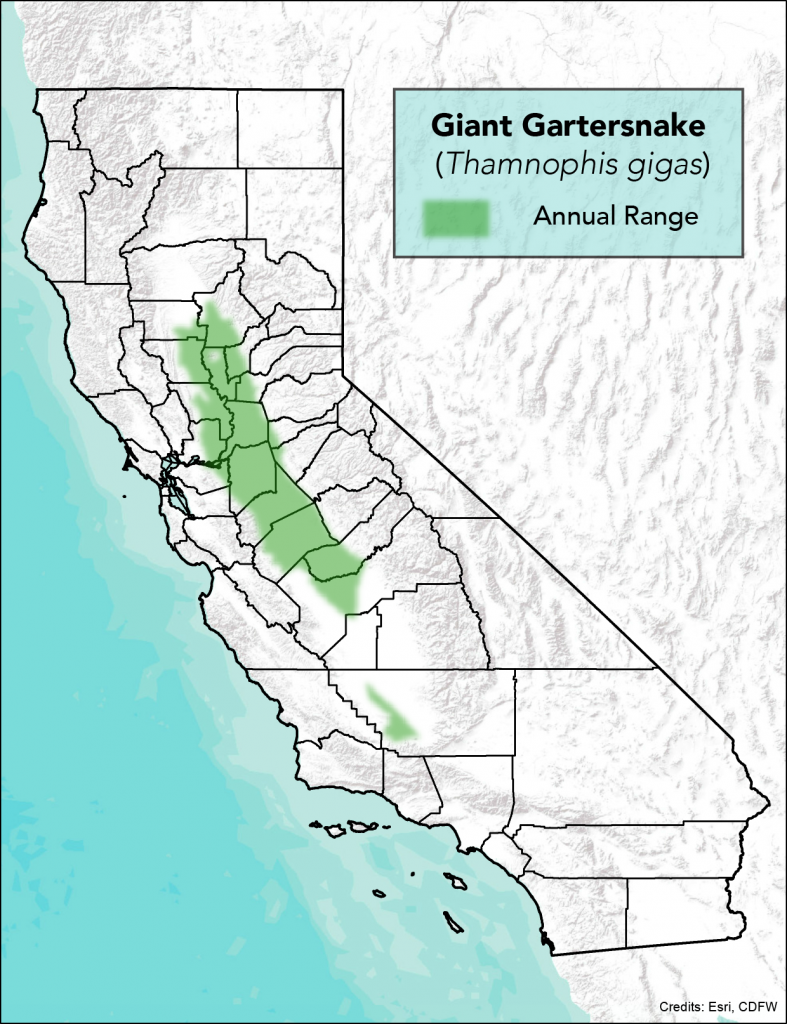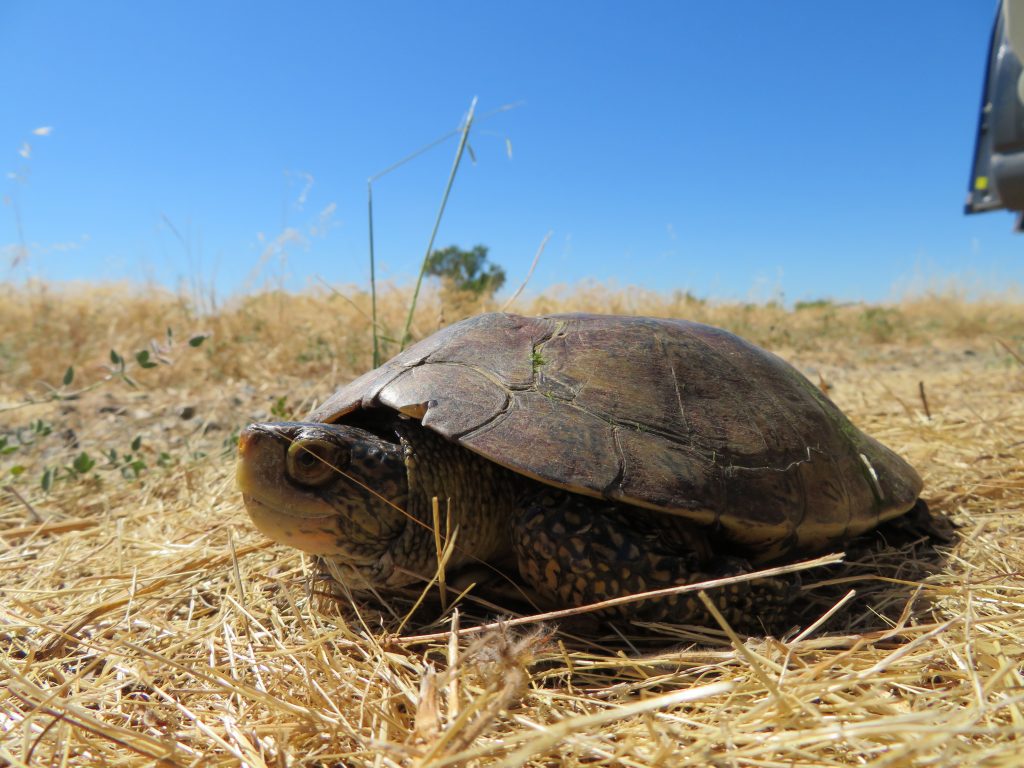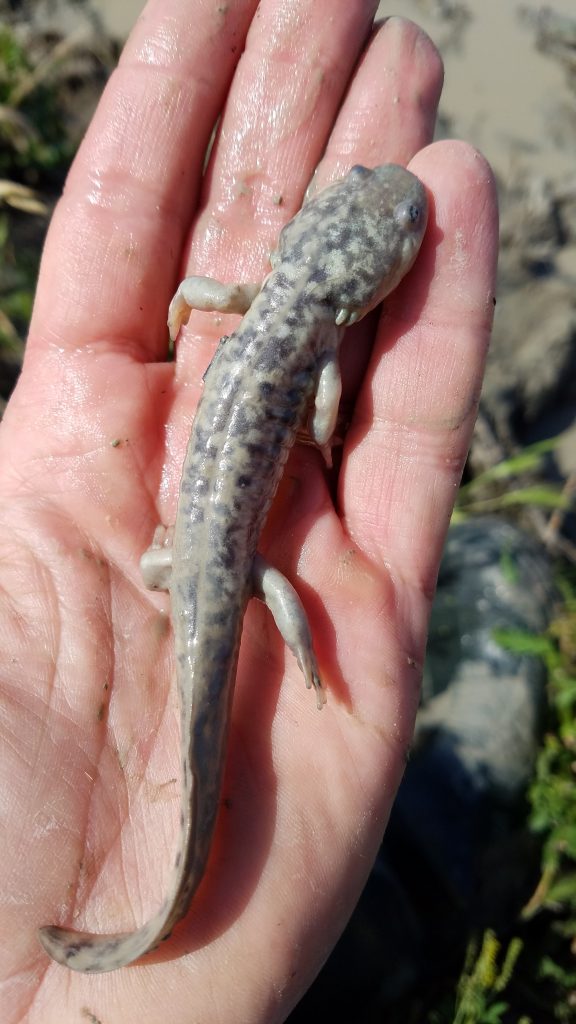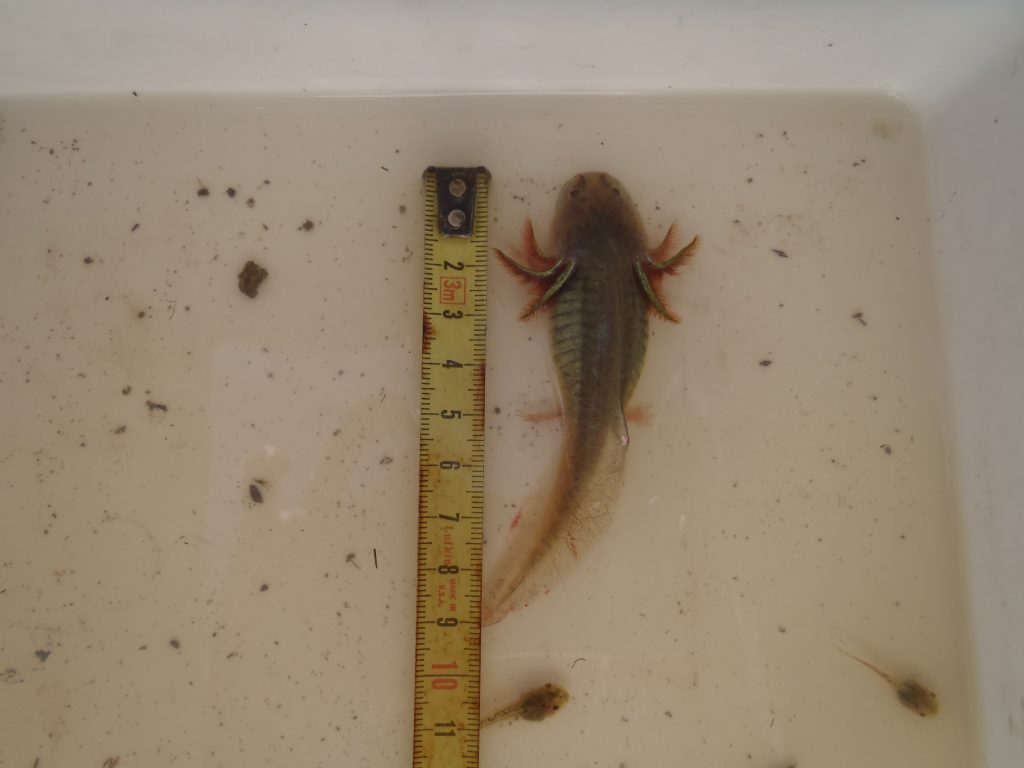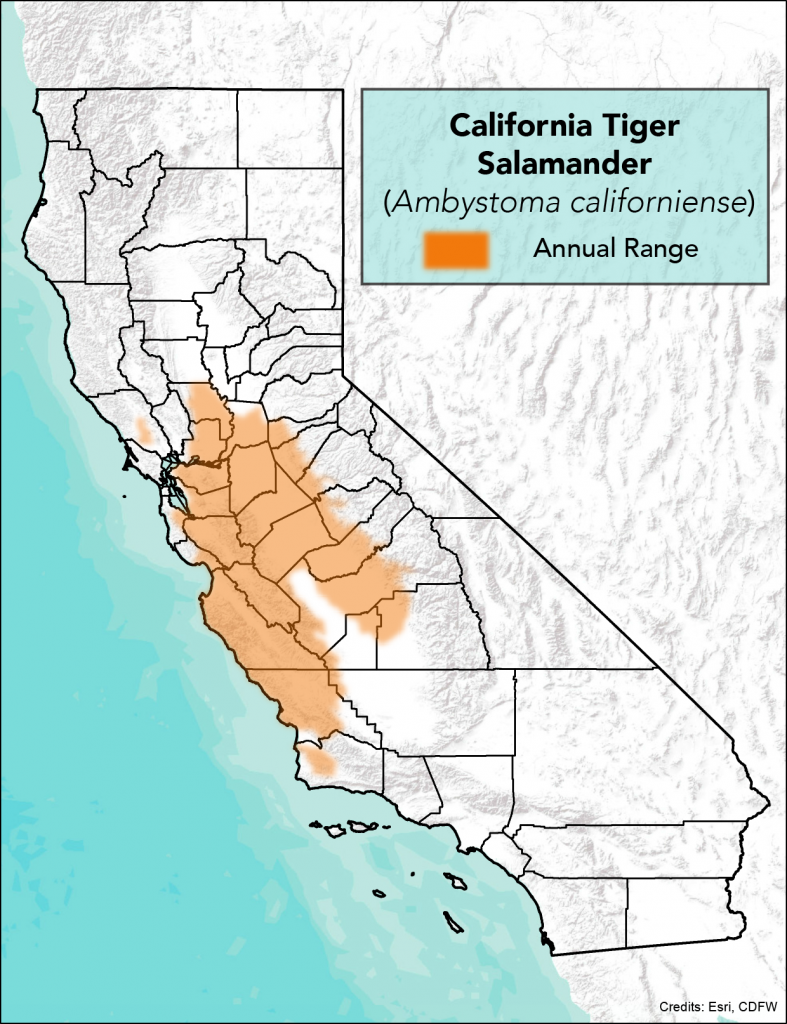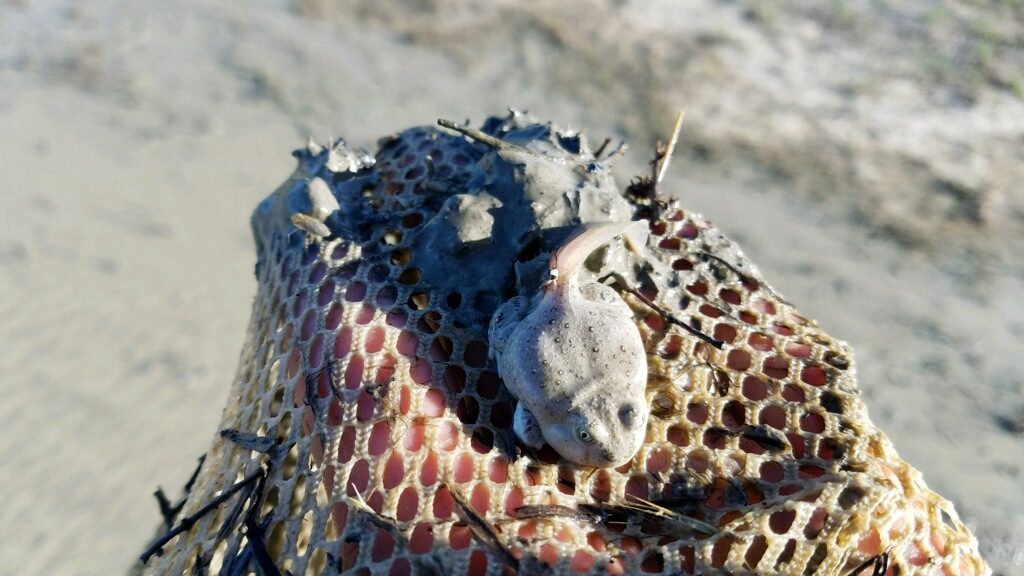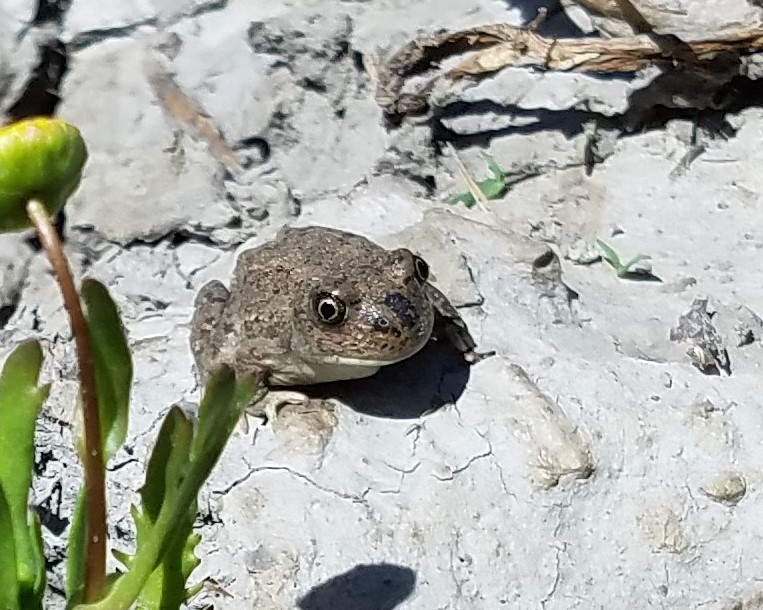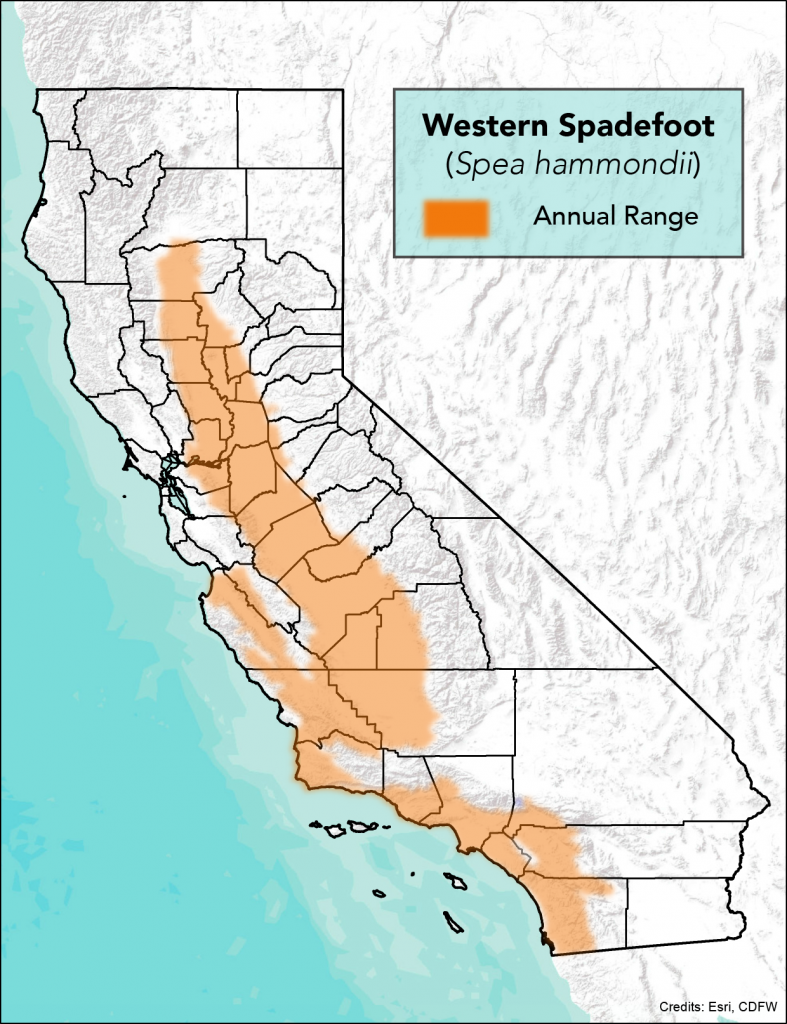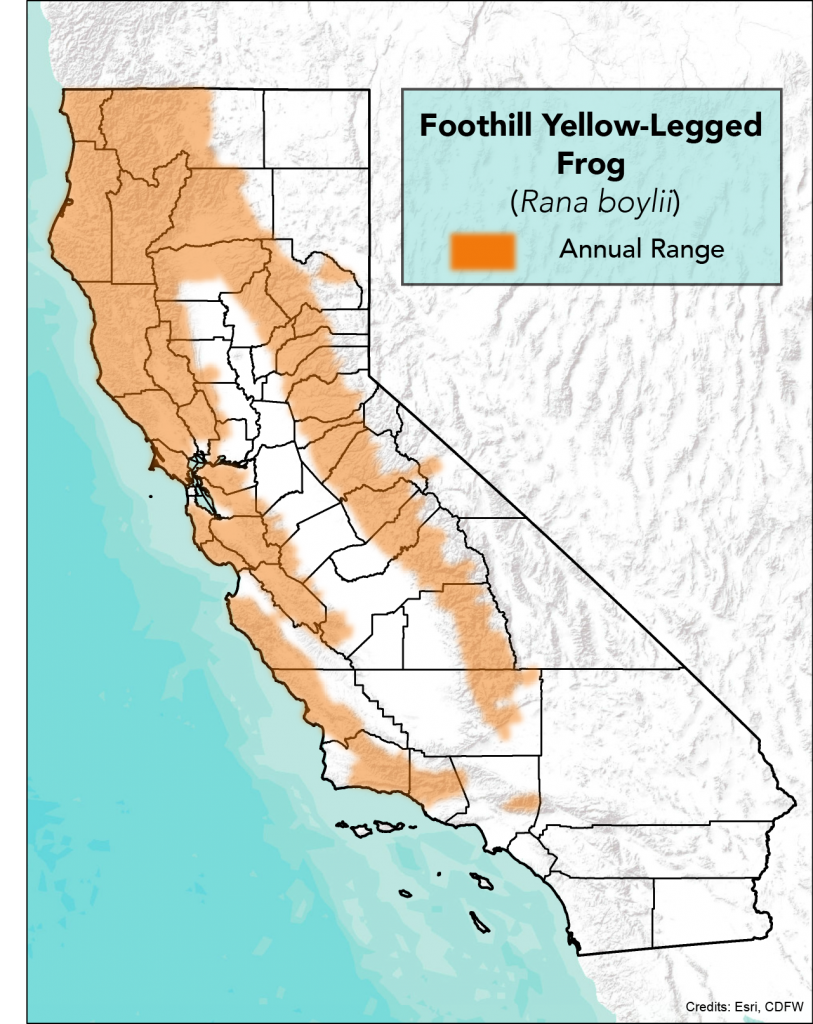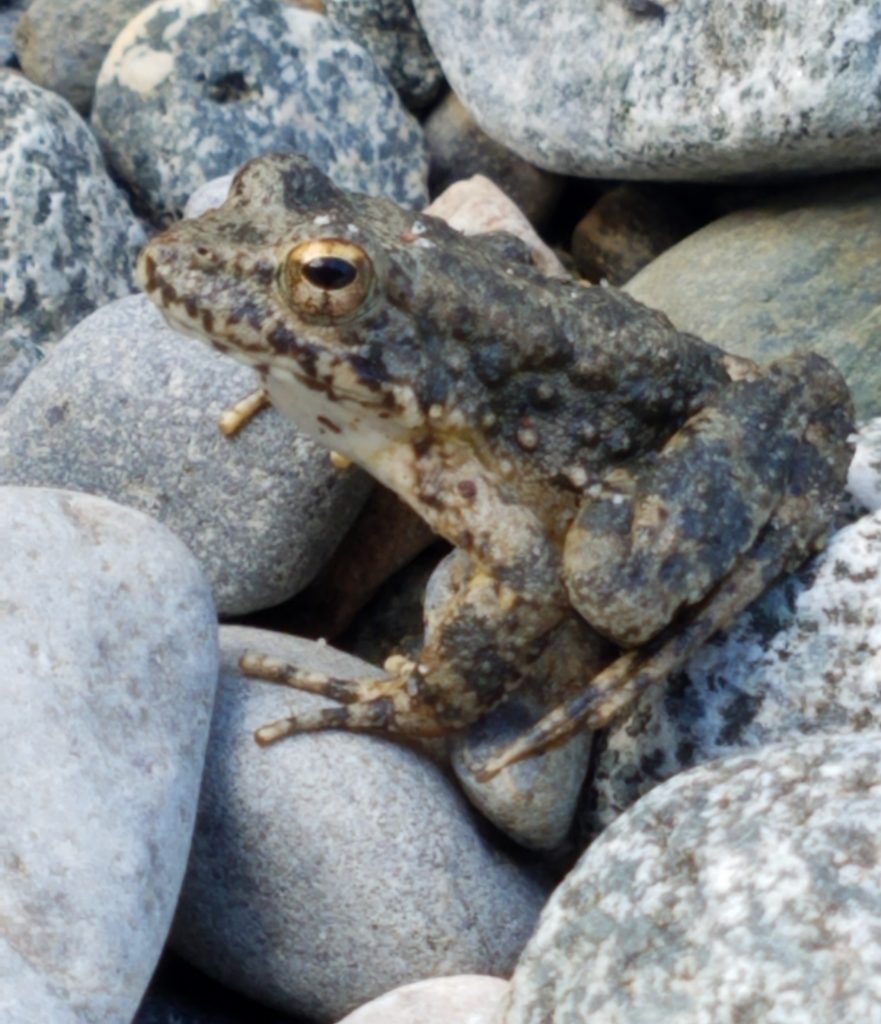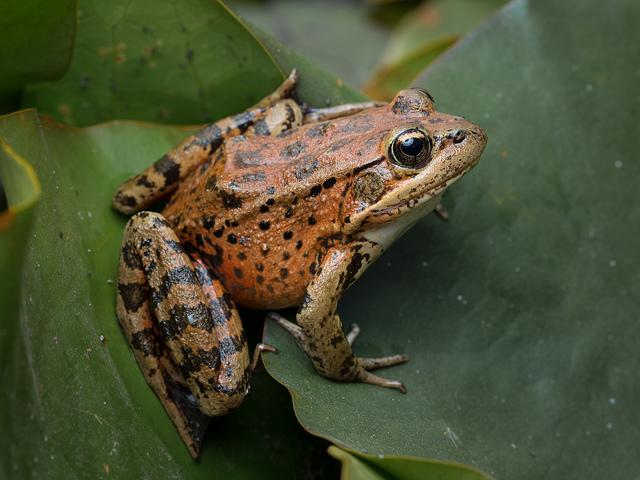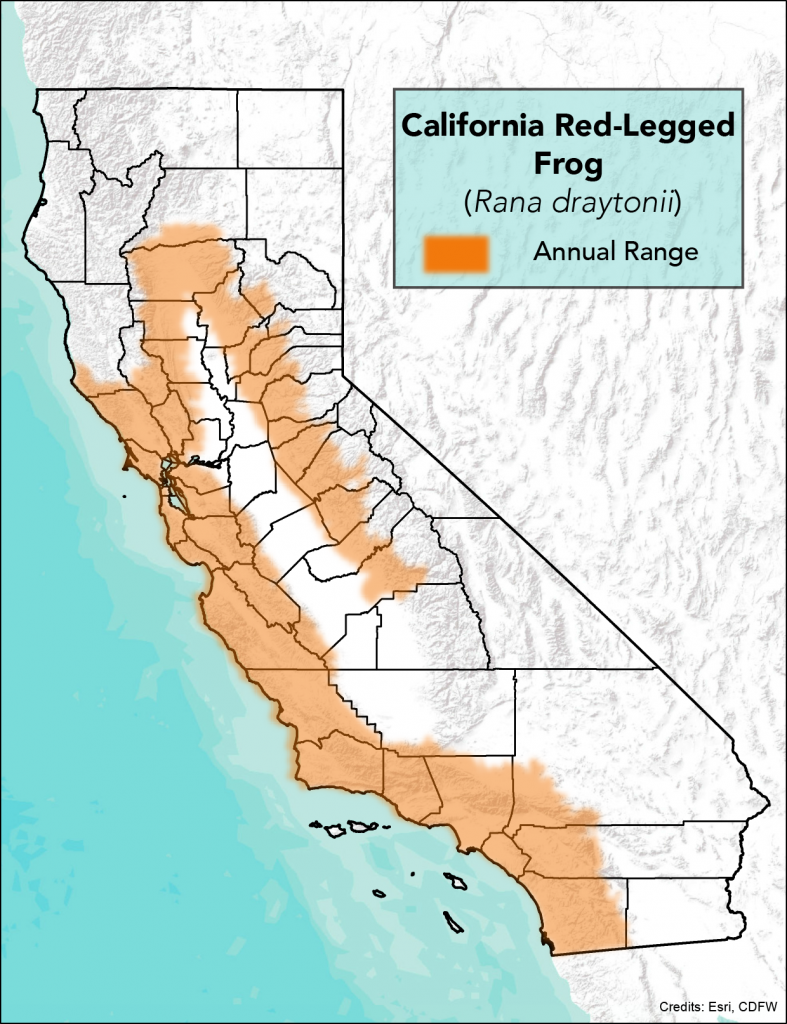Species Background
Giant Garter Snake (Thamnophis gigas)
Status: State and Federally Threatened
Phylum: Chordata
Class: Reptilia
Order: Squamata
Family: Colubridae
The Giant Garter Snake (GGS) is one of the largest garter snake species and can reach up to 64 inches in length, with females larger than males. Giant garter snakes inhabit agricultural wetlands, irrigation canals, wetland ponds, small lakes, and sloughs. These snakes are most active from May – October, and will hibernate in animal burrows over winter. Much of the GGS historic range has disappeared due to habitat loss and fragmentation. There are still several small populations throughout the central valley, and a population in the San Joaquin Valley. Rice fields play an important role in the survival of these populations because they provide hundreds of acres of habitat in the Sacramento Valley.
Northwestern Pond Turtle (Actinemys marmorata)
Status: Species of Special Concern
Phylum: Chordata
Class: Reptilia
Order: Testudines
Family: Emydidae
Northwestern pond turtles are the only native freshwater turtle in California. These are relatively small turtles with a low carapace that is olive, brown, or blackish in color. The carapace may be unpatterned, but is usually marked with dark spots or lines radiating from the center of the scutes. Northwestern pond turtles are diurnal species and highly aquatic inhabiting ponds, lakes, reservoirs, irrigation ditches, rivers, and streams. They are most active from February to November, and will hibernate underwater or in loose soil over winter. Pond turtles are omnivorous and are known to eat aquatic plants, invertebrates, amphibian eggs and larvae, and carrion. Commercial exploitation combined with loss of wetland habitat due to agricultural expansion has caused an extreme population decline.
California Tiger Salamander (Abystoa californiense)
Status: State and Federally Threatened
Phylum: Chordata
Class: Amphibia
Order: Caudata
Family: Ambystomatidae
California tiger salamanders (CTS) are large, stocky salamanders that are endemic to California. They are a bold black color with yellow spots/bars throughout most their body. Ambystomatidae salamanders have two distinct life phases; larvae hatch from eggs laid in water where they live for 3-6 months and breathe using filamentous external gills, the aquatic larvae undergo metamorphosis during the summer where they will transform into four-legged salamanders. Tiger salamanders are nocturnal, spending most of their time underground in animal burrows, they need both upland habitat (with burrows) and temporary breeding ponds (vernal pools) in order to survive. Many populations have been extirpated from California due to loss of habitat from urbanization and agriculture.
Western Spadefoot (Spea hamondii)
Status: California Species of special concern
Phlyum: Chordata
Class: Amphibia
Order: Anura
Family: Scaphiopodidae
Western spadefoots are medium-sized with a round snout and vertical pupils. This species gets its name from the unique “spade” or keratinized tubercle found on each one of its heels, used to aid in digging. S. hamondii are found throughout the California Central Valley down to northwestern Baja and they spend the majority of their time underground. Spadefoots can persist in very dry and warm environments but require water for breeding and laying eggs. Populations are in decline due to development and conversion of habitat, often changing the hydroperiod of necessary water sources.
Foothill Yellow Legged Frog (Rana boylii)
Status: California Species of Special Concern – under review for listing
Phylum: Chordata
Class: Amphibia
Order: Anura
Family: Ranidae
Foothill yellow legged frogs are a true frog and are dependent on water systems for survival. Very little is known about this species life history. They are most active during the day and live in moving streams with rocky floors and will dive and hide under rocks when threatened. Coloration varies, but R. boylii are distinguished by the yellow hue on the undersides of their legs and abdomens. This species has disappeared from much of its range due to habitat loss, introduction of invasive species, and disease.
California Red-Legged Frog (Rana draytonii)
Status: Federally Threatened; California Species of Special Concern
Phylum: Chordata
Class: Amphibia
Order: Anura
Family: Ranidae
The California Red-legged Frog is the state amphibian of California. Rana draytonii is the largest native frog in the western United States, and as its name suggests, the undersides of adults’ hind legs and abdomens are generally red. Red-legged frogs were once abundant and widespread in California, but have disappeared from 70% of their historic range. R. draytonii was heavily targeted by hunters for frogs legs during the late 19th century. Much of the aquatic habitats these frogs depend on have been extensively drained or modified, especially in the Central Valley. The introduction of American Bullfrogs (Lithobates catesbeianus) to California has had profound impacts on red-legged frogs, completely eliminating populations within a few years.

